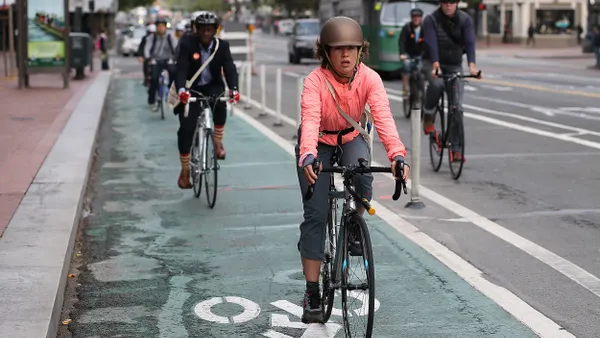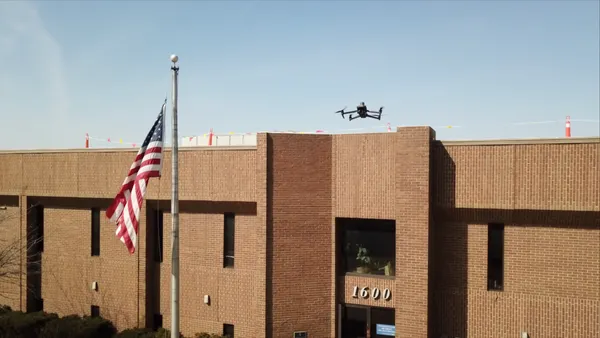The COVID-19 pandemic hit public transit systems hard, as social distancing requirements, work-from-home policies and fear of contagion drastically cut ridership. In the U.S., public transit ridership dropped nearly 80% in April 2020 and remained about 60% below 2019 levels for the remainder of the year, according to a report released by the American Public Transportation Association¹. The good news is that contactless payments systems, which are being adopted to create a hygienic and safe experience at the point of sale, offer major benefits that could help riders feel safer when they return to public transportation.
Tap to pay was already on the rise before the pandemic, comprising an estimated one-third of all transactions globally. According to Visa, the use of the payment option doubled in the U.S. during the pandemic, where more than 300 million contactless cards are now in circulation². Payment networks have helped transit operators around the globe transition to “open-loop” contactless payment systems, which allow riders to simply tap their phone or contactless-enabled card or device to ride.
Tap to pay creates a fast and convenient entry for riders who no longer need to handle money or stand in line to buy a special card from ticket vending machines. In addition, the challenge of figuring out how to pay for public transit in a new city could be vastly improved by a ubiquitous tap to pay system that is the same no matter where around the world they are riding. “Tap to pay has the potential to become a universal process that simplifies the public transit experience around the globe,” said Jason Blackhurst, senior vice president of global seller products at Visa. “It wouldn’t matter if you don’t speak the local language or don’t know how to count out the local currency. Tap to pay would essentially be the same user experience wherever you go.”
In a 2019 survey, 49% of U.K. commuters cited the introduction of open-loop contactless payments as the single most significant improvement to their overall public urban mobility experience. Furthermore, Visa's latest research shows that enabling tap to pay on transit systems is good for economic recovery, bringing more than a 15% lift in transactions to merchants in surrounding neighborhoods³.
California Turns on the Tap
In California, more than 300 different transit agencies serve the state’s 40 million residents. But the California Integrated Travel Project, led by the California Department of Transportation, envisions a simpler and more cost-effective network of public transit operators unified by open-loop payments.
In addition to supporting multi-modal interoperability between transit regions, the simplicity of contactless payments can improve cash flow and operational efficiency for transit agencies. One Visa study suggests cost savings for more than 30% of operators compared to ticket vending machines or kiosks⁴. Also, existing technology from payment networks like Visa and its partners, combined with the Mobility & Transport Transaction standard, allows transit agencies of any size to process transactions in accordance with EMV standards and in line with an agency’s fare policy –For example, by simply capping fares once a rider has paid for a month’s worth of rides, — and granting free access after that — transit agencies can give regular riders the same advantage of unlimited ride passes without the large up-front expenditures that can be cost-prohibitive to economically disadvantaged riders who often rely on public transit the most.
"The pandemic forced us to think differently about the safety of our coach operators and passengers, as well as examine how we achieve specific social outcomes with our services,” said Carl Sedoryk, general manager of California’s Monterey-Salinas Transit (MST) “The pandemic showed us who in our communities are most dependent upon transit to make essential trips for work, grocery shopping and medical appointments. We are reexamining our routes, service frequency and fare structures to ensure that those who need our services the most have access to mobility to reach their essential destinations.”
Through the California Integrated Travel Project MST launched the state’s first demonstration of contactless payments on its bus fleet in partnership with Visa, Cybersource and other partners. Through this initiative, MST riders who tap will only pay for the distance they travel. The project also fits the agency’s “Whole Community” approach to disaster response and recovery adopted in 2020 by the MST board. Recommended by FEMA, the policy directs staff to identify projects and activities that use publicly funded resources to support the recovery of the entire community. To that end, MST donated surplus vehicles to nonprofit agencies, helped with wildfire and flood evacuations, and offered medical transport to veterans whose caregivers were restricted by the pandemic.
Accelerating Adoption
At least four other California transit operators are set to launch contactless payments later this year, and adoption is accelerating around the globe as well. According to Jeroen Kok, the senior lead on payment and mobility for consulting group Rebel, public transit agencies began looking for solutions right away when the pandemic hit. Many of them already had contactless payments queued up as future projects, which quickly moved to the front of the line.
“The whole payment industry is focused on making things easy, and bringing modern payments to transit is a great step towards making things more seamless for riders and transit operators,” Kok said. “Using something you already have — whether a bank card or a digital wallet — is a huge breakthrough in transit.”
Today, Visa has already helped power more than 450 contactless transit projects around the world, with more than 700 currently in the pipeline⁵—an indicator of just how much interest and traction contactless payments in the transit space is seeing.
As cities around the globe begin to reopen, public transportation will play a critical role in recovery, and contactless payments can help provide a safe and easy experience for riders and transit operators seeking limited physical touchpoints and interactions.
Click here for more details on Visa’s work in the global urban mobility space.










